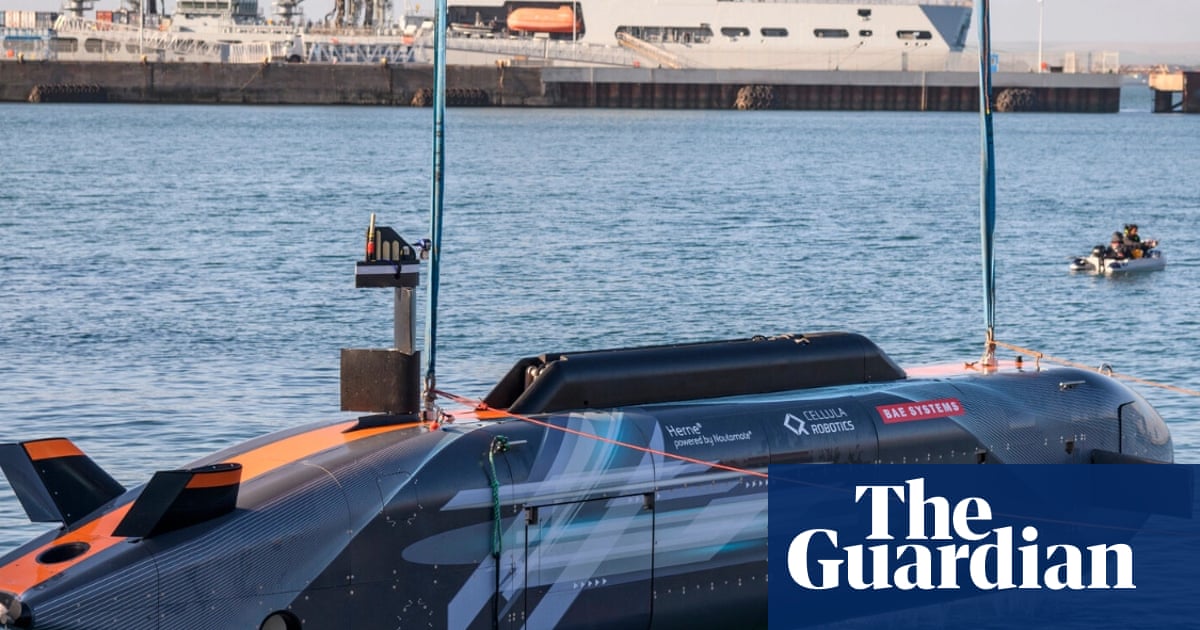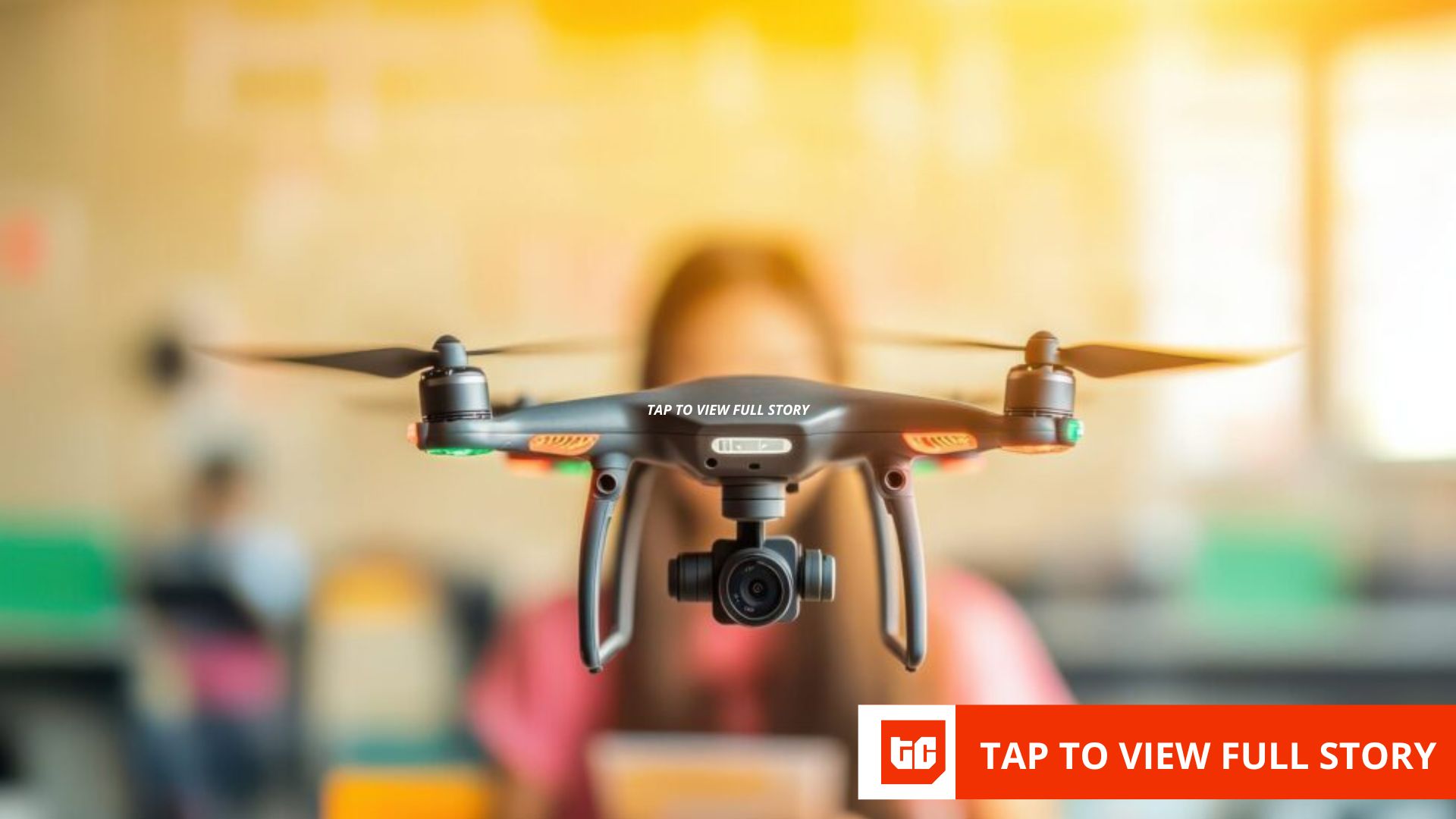Flying drones used during the Ukraine war have changed land battle tactics for ever. Now the same thing appears to be happening under the sea.
Navies around the world are racing to add autonomous submarines. The UK’s Royal Navy is planning a fleet of underwater uncrewed vehicles (UUVs) which will, for the first time, take a leading role in tracking submarines and protecting undersea cables and pipelines. Australia has committed to spending $1.7bn (£1.3bn) on “Ghost Shark” submarines to counter Chinese submarines. The huge US Navy is spending billions on several UUV projects, including one already in use that can be launched from nuclear submarines.
Autonomous uncrewed submarines represent “a genuine step-change in the underwater battle space”, said Scott Jamieson, the managing director for maritime and land defense solutions at BAE Systems, Britain’s dominant weapons company and builder of its nuclear submarines. The new drones under development would allow navies to “scale up in ways that just weren’t available before”, at “a fraction of the cost of manned submarines”, he said.
The opportunity of a huge new market is pitting big, experienced defense companies, including BAE Systems and the US’s General Dynamics and Boeing against weapons tech startups such as the American firm Anduril – the maker of the Ghost Shark – and Germany’s Helsing. The startups claim they can move faster and cheaper.
The struggle for undersea dominance has been almost constant in peacetime and war for most of the last century.
The first nuclear-powered submarine (the US’s Nautilus, named after Jules Verne’s fictional vessel) was launched in 1954, and nuclear-armed vessels are now the centrepiece of the armed forces of six countries – the US, Russia, the UK, France, China and India – while North Korea may have recently become a seventh. That is despite deep controversy over whether the weapons represent value for huge sums of money, and whether such a destructive arsenal truly acts as a useful deterrent.
Those armed forces are playing a constant game of hide and seek on the oceans. In order to avoid detection, the submarines rarely surface: maintenance problems on other vessels recently forced some British submariners to spend a record nine months underwater, carrying Trident nuclear missiles that are theoretically ready to strike at any time.
Tracking Russia’s underwater nuclear arsenal – which has become quieter in recent years – is a key focus of the Royal Navy, particularly focusing on the Greenland-Iceland-UK (GIUK) gap, a “chokepoint” that allows Nato allies to monitor Russian movements in the north Atlantic. A weapons executive said the South China Sea was another promising market, as China and its neighbors face off in a tense, long-running territorial dispute.
Underwater drones offer the promise of making it easier to track rivals’ submarines. Some sensors are designed to be dropped by other UUVs to lurk on the seabed for months at a time, according to an executive hoping to sell to the UK.
The second spur has been the increasing number of apparent attacks on oil and gas pipelines, such as the Nord Stream attack in 2022, for which Germany has identified a Ukrainian suspect, and damage in 2023 to the Balticconnector pipeline between Finland and Estonia. Undersea power and internet cables are also crucial to the global economy. An underwater power cable between Finland and Estonia was hit last Christmas, two months after two telecommunications cables in Swedish waters in the Baltic Sea were cut.
The UK government last week accused Russia’s Yantar surveillance ship of entering British waters to map undersea cables. It said the UK had seen a 30% increase in Russian vessels threatening UK waters in the past two years.
Parliament’s defense select committee has raised concerns over the UK’s vulnerability to undersea sabotage, known as “grey zone” actions that can cause big disruption but are likely to fall short of acts of war. Damage to the 60 undersea data and energy cables around the British Isles “could have devastating consequences for the UK”, the committee said.
Andy Thomis, the chief executive of Cohort, a British manufacturer of military technology including sonar sensors, said the crewed ships, planes and submarines used up to now to track nuclear-armed subs or sabotage vessels were “very, very capable and very, very expensive”. But, he said, “by combining those with uncrewed vessels, you get the decision-making abilities that humans can give you without putting them in very dangerous proximity”.
Cohort hopes that some of its towed sensors (named Krait, after a sea snake) could be used on smaller autonomous vessels.
The newest vessels contain as many as five times more sonar sensors than submarines in service. Lower power requirements are particularly important for smaller, uncrewed vessels, which do not have the luxury of a nuclear reactor on board. Passive sensors – which do not send out a sonar “ping” – make it harder to detect and destroy.
The Royal Navy, and the armed forces in general, are not known for getting the latest technology into action quickly. However, Ukraine’s forces have learned that speed and low cost are crucial when it comes to building drones for the air and the sea. For the undersea drones, the Ministry of Defense is trying to learn that lesson, asking for rapid development of tech demonstrators under “Project Cabot”.
after newsletter promotion
BAE has already tested a possible contender, called Herne. Helsing is building a facility in Portsmouth, the home of the Royal Navy, to produce underwater drones. Anduril, which is run by the Donald Trump fundraiser Palmer Luckey, is eyeing up UK manufacturing sites.
The initial contract awards are expected this year, followed by testing, likely to be in north-west Scotland by the defense company QinetiQ, and a full-scale order for one or two companies, named Atlantic Net, to fill the GIUK gap with sensors.
The Royal Navy has described the project as “anti-submarine warfare as a service”, riffing on the much more common “software as a service”, according to a £24m tender notice published in May.
Sidharth Kaushal, a senior research fellow on sea power at the Royal United Services Institute thinktank, said the submarine-hunting strategy of recent decades “doesn’t scale in a conflict” because it required an expensive mix of big “exquisite assets”.
Warships tow cables more than 100 meters long containing arrays of sonar sensors to try to pick up the faintest and lowest-frequency sounds. Planes such as the UK’s Boeing P-8 fleet drop disposable sonobuoys to detect submarines through the depths of the sea, satellites scour the surface for signs of wake left by a submarine communications mast, and a scattering of hunter-killer submarines patrol beneath the waves.
The idea of cheap drones taking on a chunk of this work is attractive. Yet Kaushal warned that the price advantage “remains to be seen”. Industry figures warn that a big fleet of UUVs would still come with significant maintenance costs.
For protecting undersea cables, too, it could be a double-edged sword: sabotage will be cheaper and easier as well. The prospect of drones firing on one another underwater is “absolutely realistic”, one executive said.
The Ministry of Defense described it as “contractor owned, contractor operated, naval oversight” – meaning that privately owned vessels will be charged with anti-submarine warfare for the first time, potentially making them military targets.
“The first thing the Russians will do is go out and test this, and push it,” said Ian McFarlane, the sales director for underwater systems at Thales UK, which already supplies the Royal Navy with sonar arrays towed by submarine-hunting ships, uncrewed surface boats and flying drones and hopes to play a part in Cabot, integrating that data.
However, the attraction of getting companies on board, McFarlane said, was that the Royal Navy and its allies were looking for “mass and persistence now” to counteract “an aggressor who is ramping up”.











